Delamain Bottle Catalogue (last updated: Dec 30, 2024)
(573 regular bottles (50cl and up), 62 magnums and 140 miniatures (up to 50cl), but still not complete)
Introduction
Delamain was established in 1824 as Roullet & Delamain, although they were in the cognac business before, when James Delamain and Isaac Ranson (James’s farther-in-law) started a cognac company under the name of Ranson & Delamain in 1763. Isaac Ranson’s family was in the cognac trade even from 1725 on. But the Ranson & Delamain firm went bankrupt in 1817 and the family started anew seven years later.
Delamain is well-known for only making grande champagne cognacs of XO quality or better (however, there have been a few exceptions) and also for their vintage cognacs. They were one of only a few firms who always held the right to produce vintage cognacs, even when this was forbidden for all other firms from 1962 untill 1987.
Contents:
1. Pale & Dry
2. Vesper and XO
3. Sélection and Très Vieux Cognac (predecessor of the Très Vénérable)
4. Très Vénérable Cognac
5. Extra
6. Réserve de la Famille and Ancestral
7. Vintages
– Intro to the use of labels
– 7a. before 1900
– 7b. 1900 until 1940
– 7c. 1945 until 1969
– 7d. 1970 until 1979
– 7e. 1980 until now
8. Exceptions (not grande champagnes)
– 8a. three stars and other young cognacs
– 8b. Liquid Gold (VSOP)
– 8c. Napoléon (Aigle Impériale)
– 8d. Fine Champagne cognacs
– 8e. Vintage exceptions (fine champagne, petite champagne and fins bois)
9. Limited Editions
– 9.1. Pleiade
– 9.2. Single vineyard
– 9.3. Other
10. Baccarat and other decanters
11. Magnums
12. Miniatures (up to 5cl)
– 12a. Three Star miniatures
– 12b. Finalo Special
– 12c. Selection
– 12d. VSOP Liquid Gold and Fine Cognac ´R.D´
– 12e. Pale & Dry
– 12f. Napoléon
– 12g. Vesper
– 12h. Tres Vieux and Vineyard collection
– 12i. Extra
– 12j. Tres Vénérable
– 12k. Réserve de la Famille
– 12l. Other
13. Miniatures >5cl (up to half a bottle) and sets
14. Extravaganza
1. Pale & Dry (introduced by Jacques and Robert Delamain in 1920)
The Pale & Dry used to be called Très Vieille or Très Belle Grande Champagne. To make it clear to the public these bottles were aged quite a while – on average 25 years – , they added the XO a few years ago and dropped the Très Belle Grande Champagne. The colour of the bottles changed also, from green to clear.
Pale & Dry, Très Vieille Grande Champagne (Roullet & Delamain):
Pale & Dry, Très Belle Grande Champagne:
a. “Delamain & Co.” printed (some have Roullet & Delamain stated underneath):
b. “Delamain” printed wide (Delamain starting under ‘O’ of cognac and ends under ‘R’ of dry):
c. Delamain printed smaller (Delamain starting under ‘G’ of cognac and ends under ‘D’ of dry):
Pale & Dry, XO:
2. Vesper (introduced by Jean Delamain in 1953)
Vesper old type labels, fine (!) champagne
Vesper old type labels, grande champagne (1980s-mid 1990s)
Delamain on top of the label (ca. 1990 – mid 2000s)
Vesper new type labels (from around mid 2000s)
From 2019:
3. Sélection and Très Vieux Cognac (predecessor of the Très Vénérable)
4. Très Vénérable Cognac (introduced in 1976 by Noël Sauzey)
Dark green glass:
Light green glass:
Très Véneré, from 2019 on:
5. Extra
6. Réserve de la Famille and Ancestral
(Réserve de la Famille was introduced by Alain Braastad and Patrick Peyrelongue in 1984)
7. Vintages
Intro regarding the labels used by Delamain:
This label is used for vintages from the 18th century, bottled by Brossault in the early 20th century.
![]()
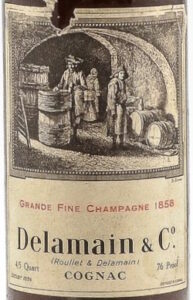 The cellar label is used until 1972 for both Delamain bottlings as for Early landed vintages that were bottled in the UK.
The cellar label is used until 1972 for both Delamain bottlings as for Early landed vintages that were bottled in the UK.
The oldest vintage I have come across is 1845, the latest 1995.
Mostly cognaçaise bottles were used, but in the 1960s and 70s Normande bottles were used.
All early landed vintages were in cognaçaise bottles, with only one exception (1968 vintage bottled by Avery’s).
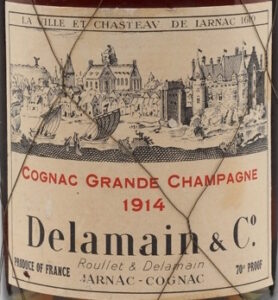 The Jarnac castle label is used in the 1960s and 70s for vintages from 1878 until 1930. Also for early landed vintages.
The Jarnac castle label is used in the 1960s and 70s for vintages from 1878 until 1930. Also for early landed vintages.
They all still bare the name Roullet & Delamain.
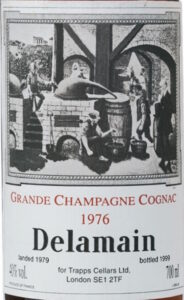 The label with the drawing of a very oldfashioned alambic is only used for Early landed vintages. They replace the cellar label in 1972 and were used for vintages from 1969 until today.
The label with the drawing of a very oldfashioned alambic is only used for Early landed vintages. They replace the cellar label in 1972 and were used for vintages from 1969 until today.
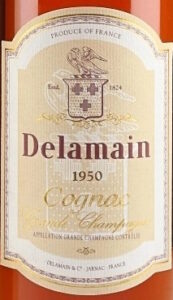 From the 1980s the eagle label is used, but only for Delamain bottlings, never for Early landed vintages.
From the 1980s the eagle label is used, but only for Delamain bottlings, never for Early landed vintages.
They are all cognaçaise bottles with vintages from 1935 till 1977. They stopped using this paper label in 2012/2013.
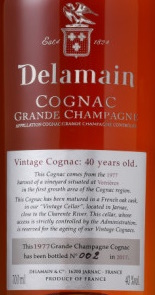 In 2012/13 the paper label was replaced by the emblem of the eagle directly on the glass. The oldest vintage I have seen is from 1963.
In 2012/13 the paper label was replaced by the emblem of the eagle directly on the glass. The oldest vintage I have seen is from 1963.
 Worth mentioning is this orange label with a big eagle on it. It was used in 1992 and 1993 for only three vintages: 1925, 1940 and 1960.
Worth mentioning is this orange label with a big eagle on it. It was used in 1992 and 1993 for only three vintages: 1925, 1940 and 1960.
Very few exceptions may exist, like the John Harvey & Sons Early landed vintages with a Royal emblem of The Queen of England.
I have prepared another page for you where the vintages are ordered by label type and Delamain bottlings versus Early landed vintage bottlings: see here.
7a. Before 1900
7a1. Roullet & Delamain:
7a2. Delamain & Co.
7b. 1900-1940
7c. 1945-1969
7d. 1970 – 1979
7e. 1980 until now
8. Exceptions (not grande champagnes)
8a. three stars and other young cognacs
8b. Liquid Gold (VSOP; Liquid Gold was registered already in 1902, 30 years old cognac)
8c. Napoleon
8d. Fine Champagne cognacs
8e. Vintage exceptions (fine champagne, petite champagne and fins bois)
9. Limited Editions
9.1 Pleiade
Pleiade, collection Apogée:
Pleiade, collection Plénitude:
Pleiade, collection Révélation:
Pleiade, other:
9.2 Single Vineyard editions:
9.3 Other editions:
10. Baccarat and other decanters
Pale & Dry
Vesper
Tres Vénérable Grande Champagne
Other
More information on the very expensive cristal bottles of Delamain on the Extravaganza page.
11. Magnums and more
Pale and Dry, old types
Delamain & Co.:
Delamain:
Pale and Dry, new types
Vesper:
Hotel series:
Last bottle is a Vesper. All other are Pale & Dry.
Vintages, Très vieux and Tres Venerable
12. Miniatures
– 12a. Three Star miniatures
– 12b. Finalo Special
– 12c. Selection
– 12d. VSOP Liquid Gold and Fine Cognac ´R.D´
– 12e. Pale and Dry
Pale & Dry, Très Belle Grande Champagne
Pale & Dry
Pale & Dry 4.5cl
Pale & Dry (XO), content unknown
Pale & Dry (XO), 3cl bottles
Pale & Dry (XO), 5cl bottles
– 12f. Napoléon
– 12g. Vesper
Vesper, content unknown
Vesper, 3cl bottles:
Vesper, 5cl bottles:
– 12h. Tres Vieux and single vineyard collection
– 12i. Extra
– 12j. Très Vénérable
– 12k. Réserve de la Famille
– 12l.Other
13. Miniatures >5cl and sets
— 20cl:
— 35cl:
— 50cl:
Christmas editions:
Single vinyard collection:
Pale & Dry:
— sets:
14. Extravaganza
The very expensive and extravagant bottles of Delamain have their own page, where there is room for a more extensive description of the bottles, notably the Delamain Voyage, the 1963 in a Daum crystal decanter and the Très Vénérable in a Daum crystal decanter.
Click on this link to see the Delamain Extravaganza page.


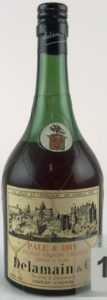

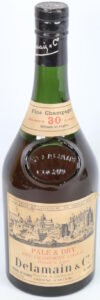
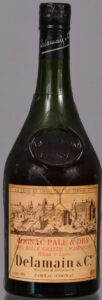
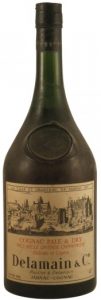

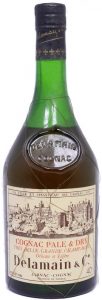

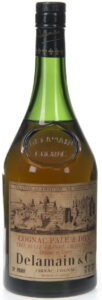
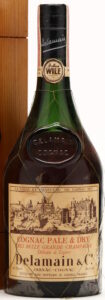

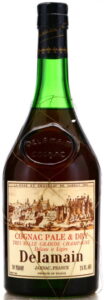
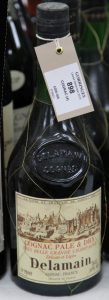
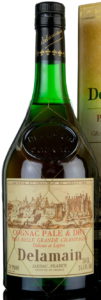
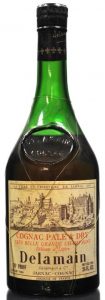
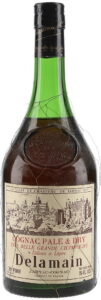

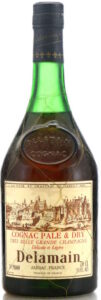



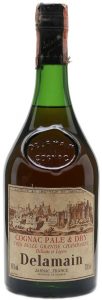

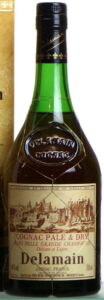
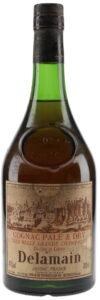
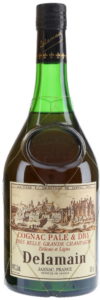


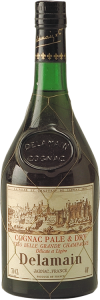
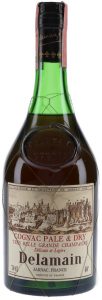

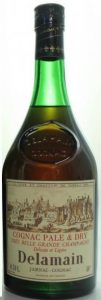
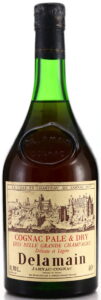
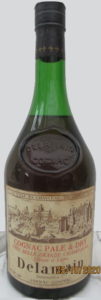
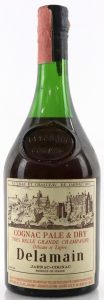
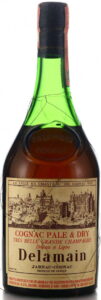

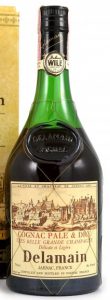
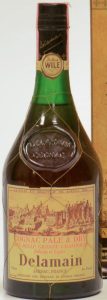
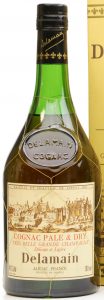
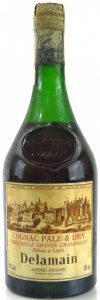


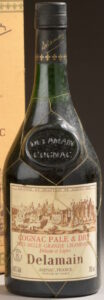
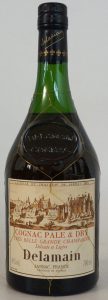



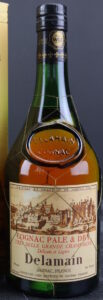
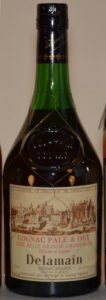
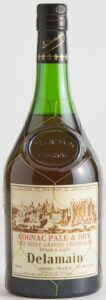
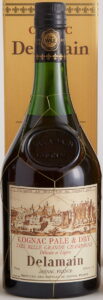

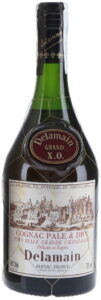




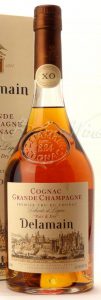












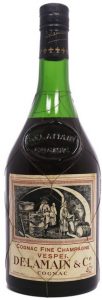
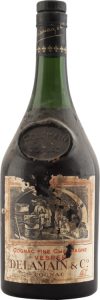
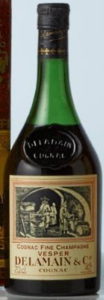
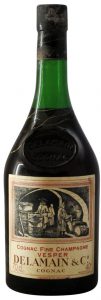




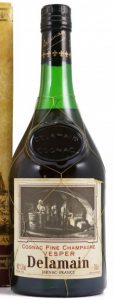
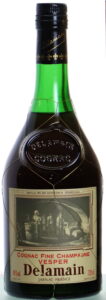


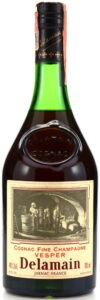
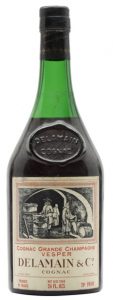
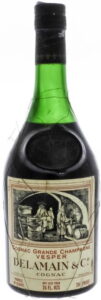

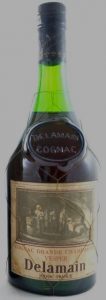


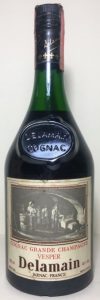

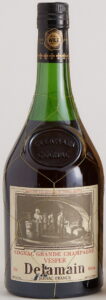
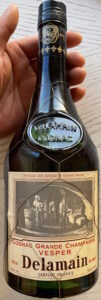
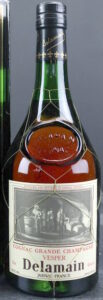
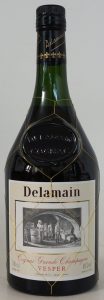
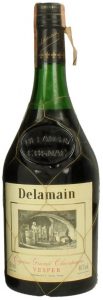




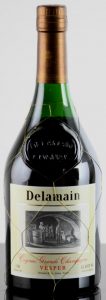


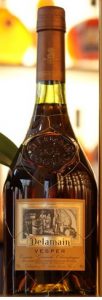
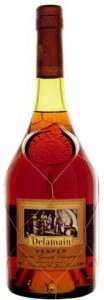


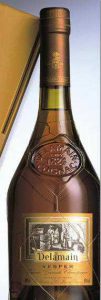


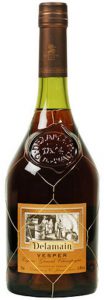






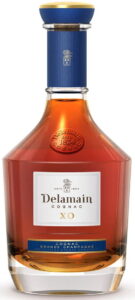
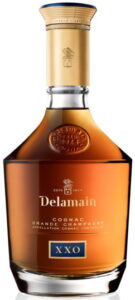


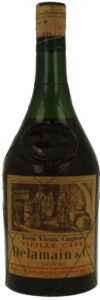
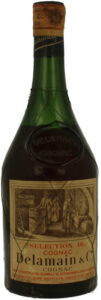

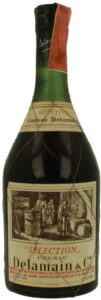
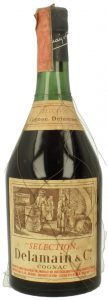
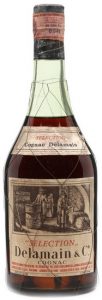
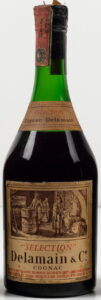
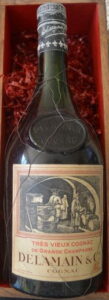

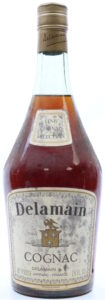



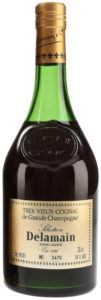

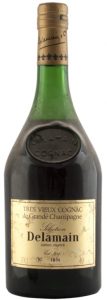

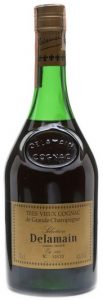
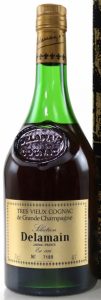
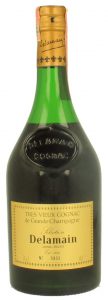

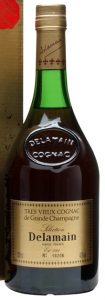

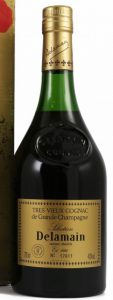
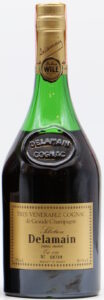


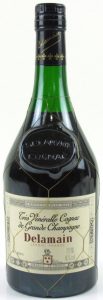
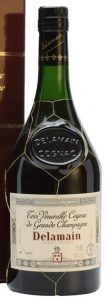
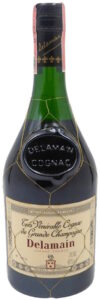

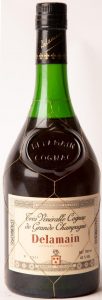

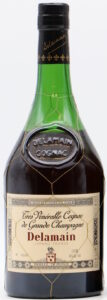
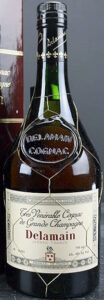
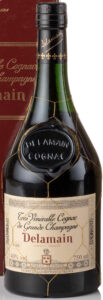
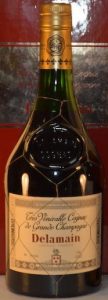


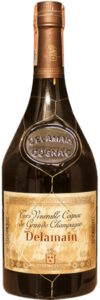


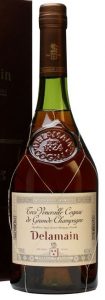






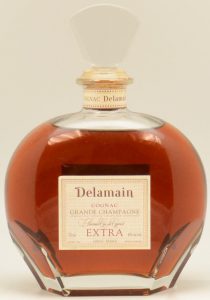
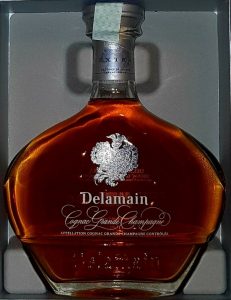
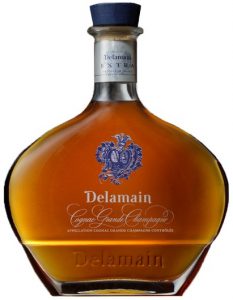
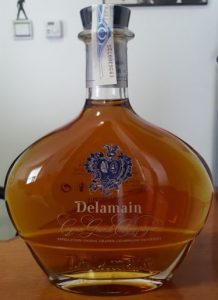
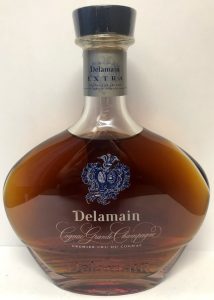





















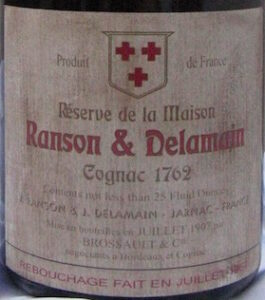












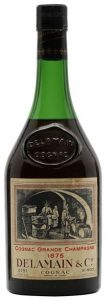

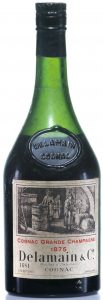



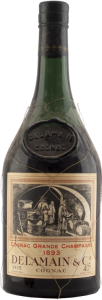
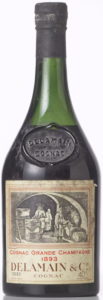
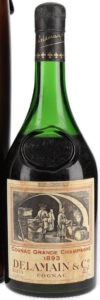
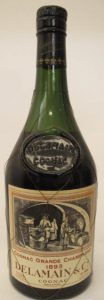

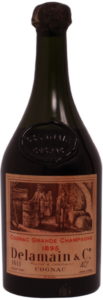
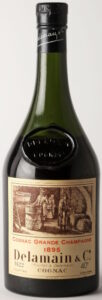
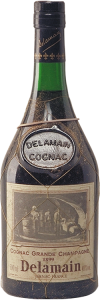









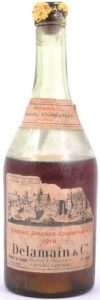


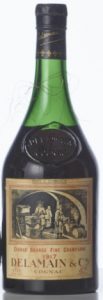

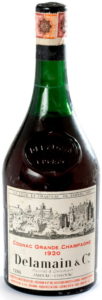
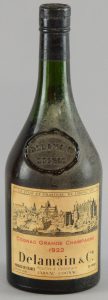
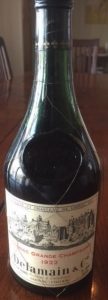




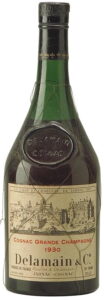
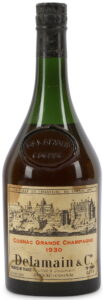
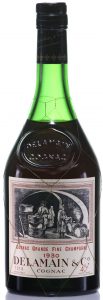
























































































































































































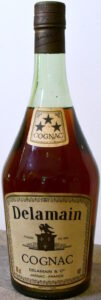




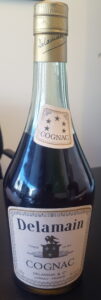



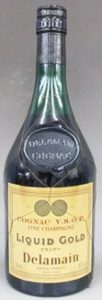
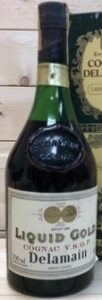
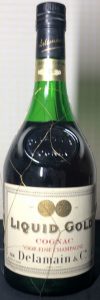
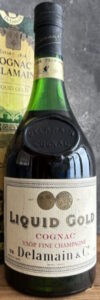

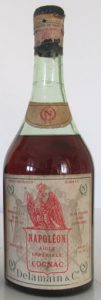
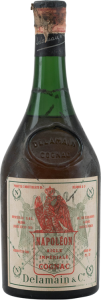
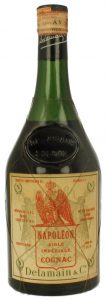
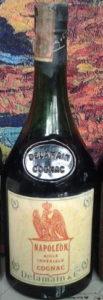
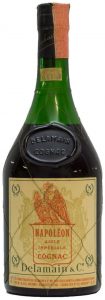
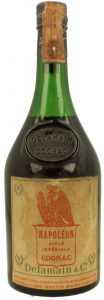
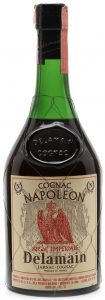
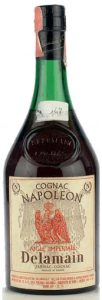


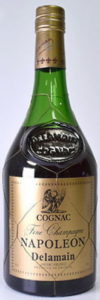

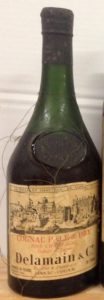
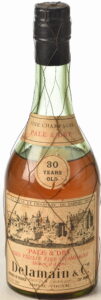

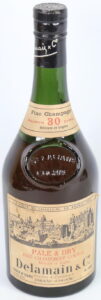


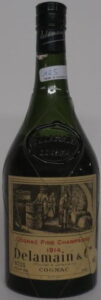

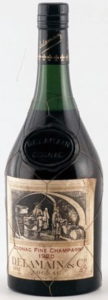
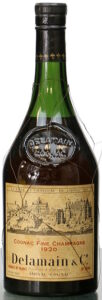
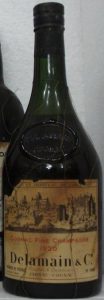


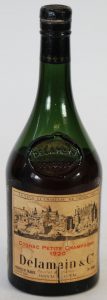
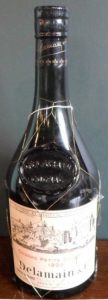








































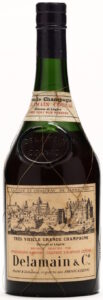
















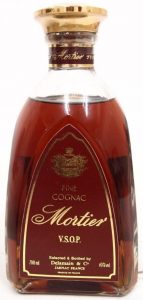

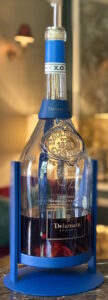



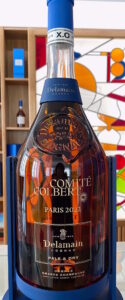
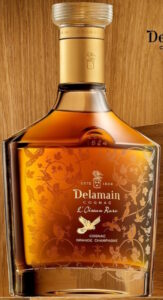

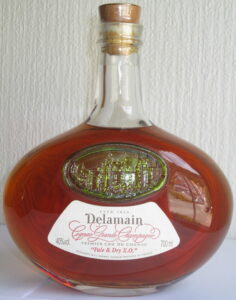
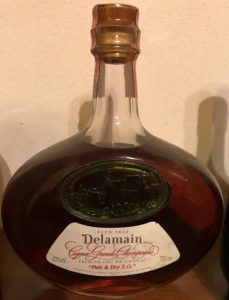

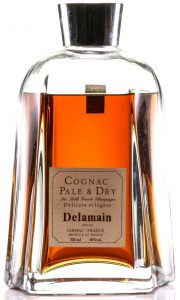
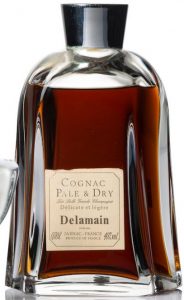
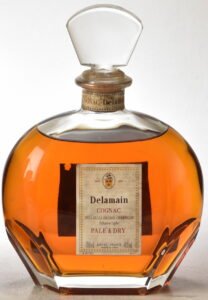
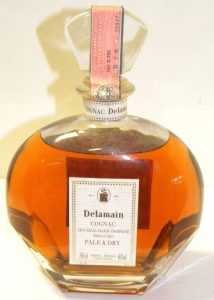

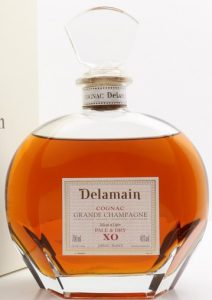
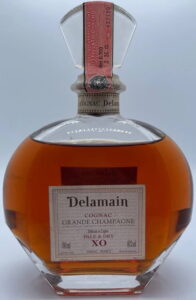
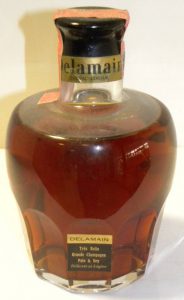
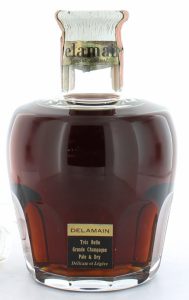
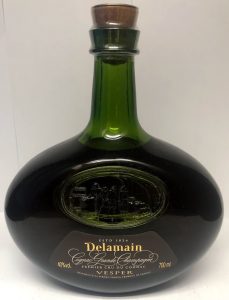
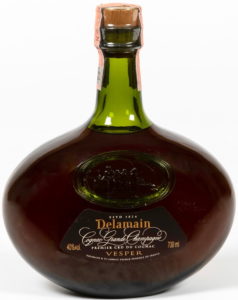
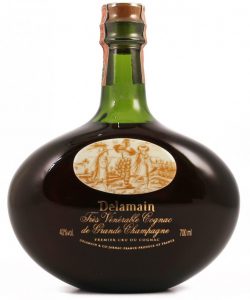
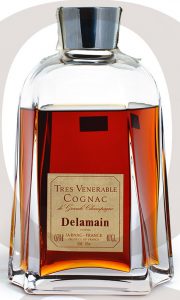
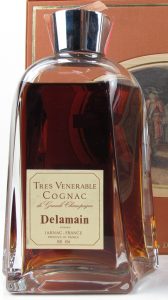
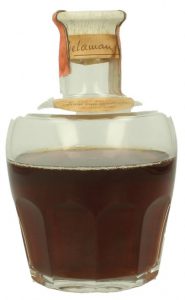
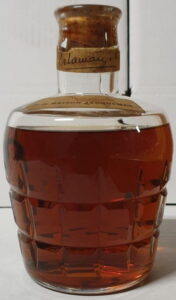
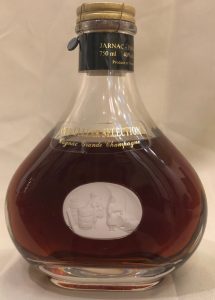
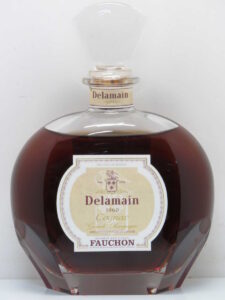
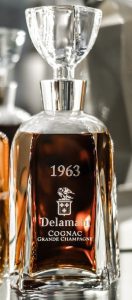
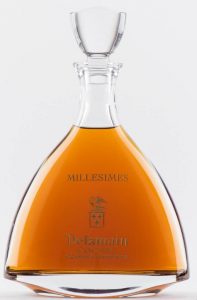
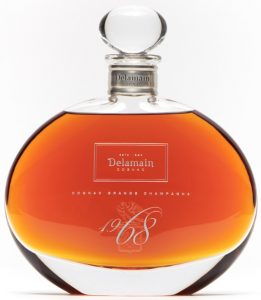

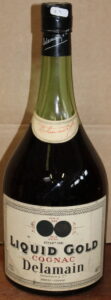
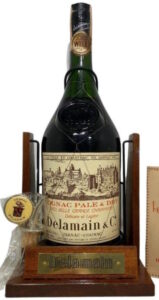
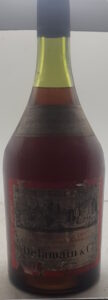
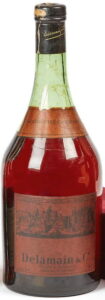
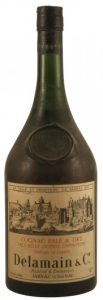
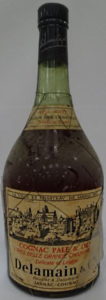

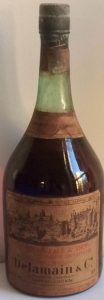
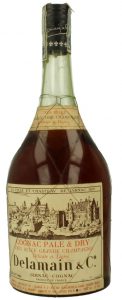
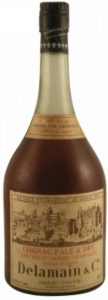
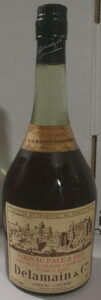
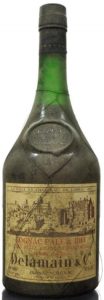

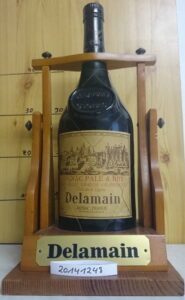


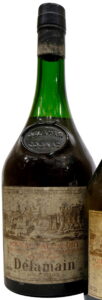


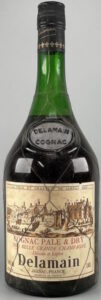
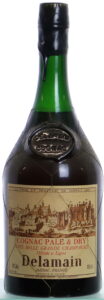
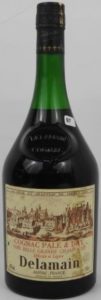


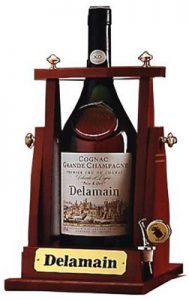

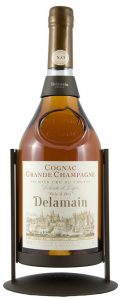


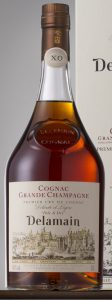


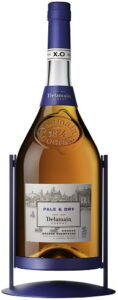
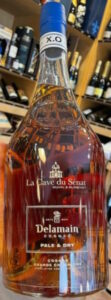
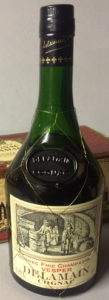
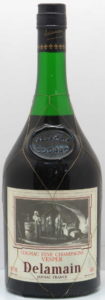
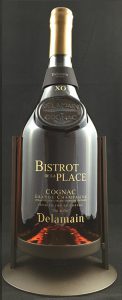
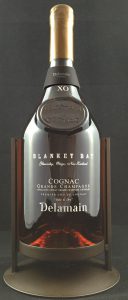
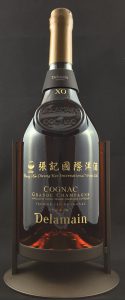
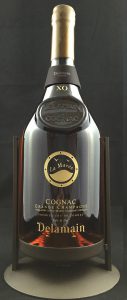
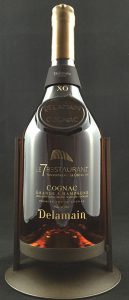
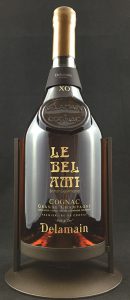

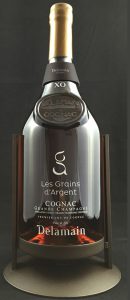

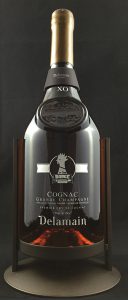
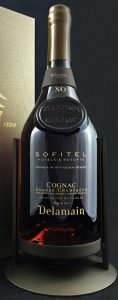


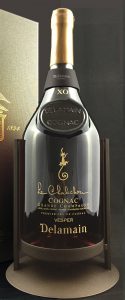
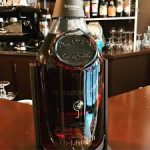
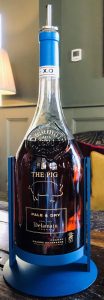

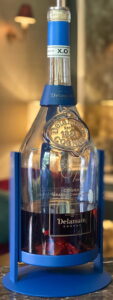


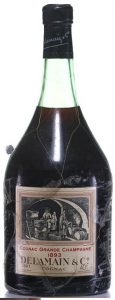
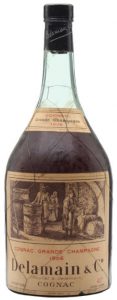
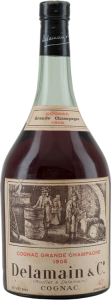

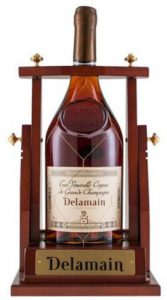
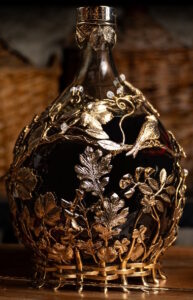





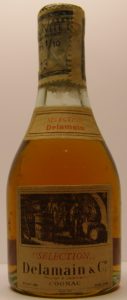

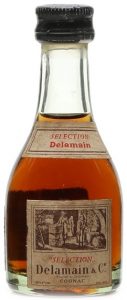
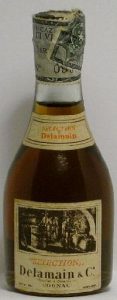
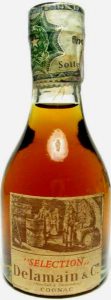
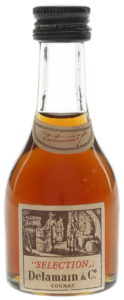

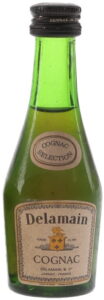
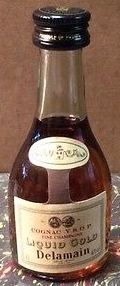
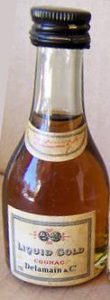

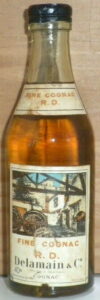
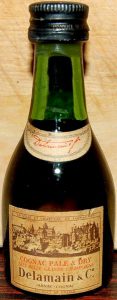
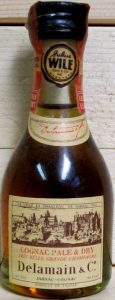
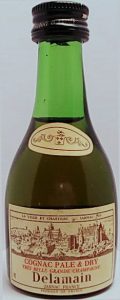
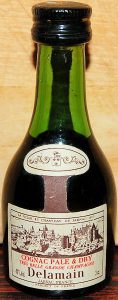

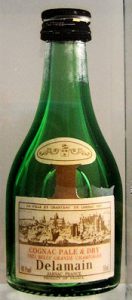
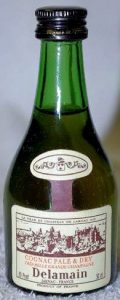
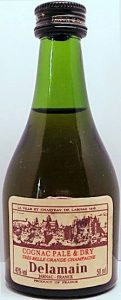
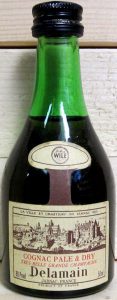
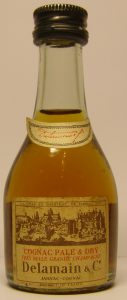
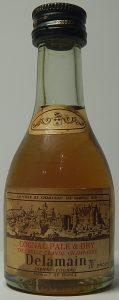
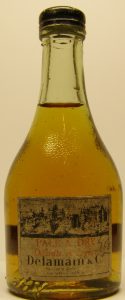
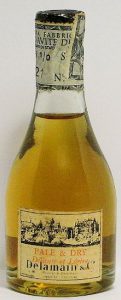
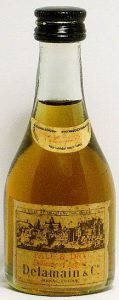
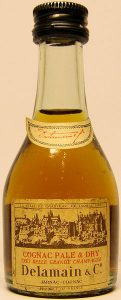
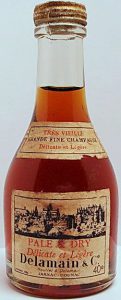
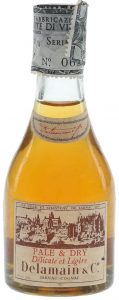
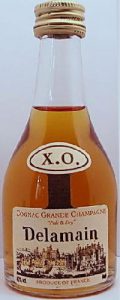



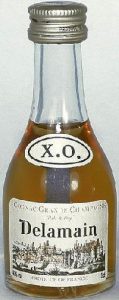
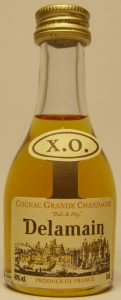
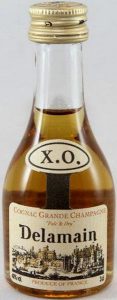
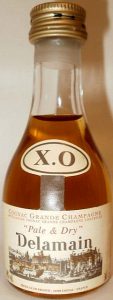
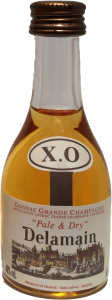

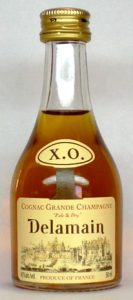
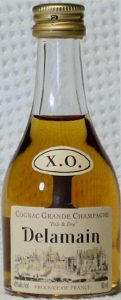





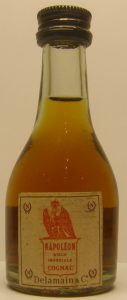
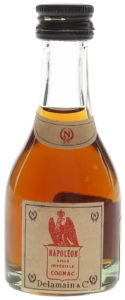
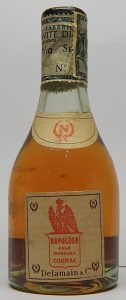

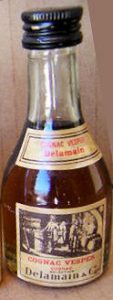
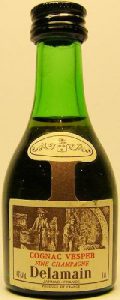
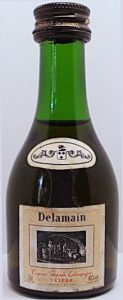
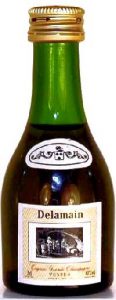
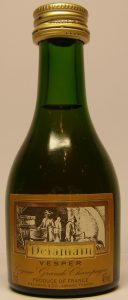
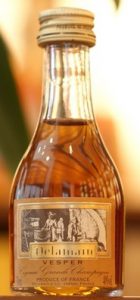
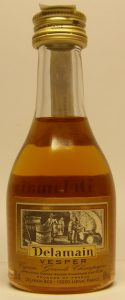

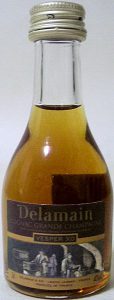



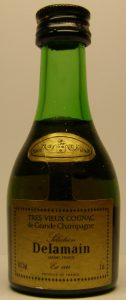
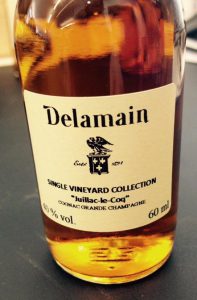
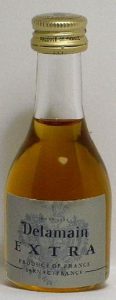
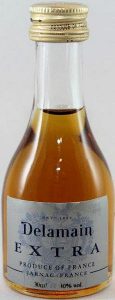

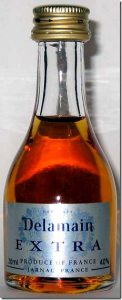



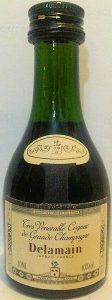
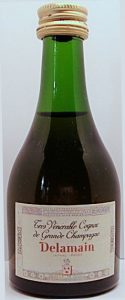
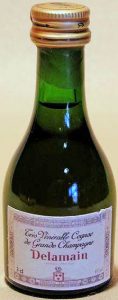
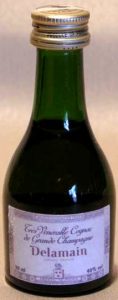
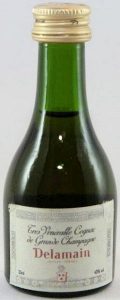


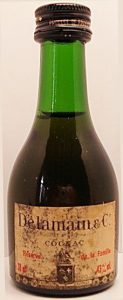
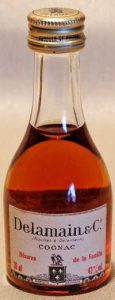
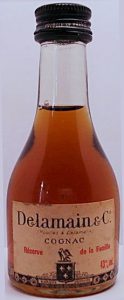






















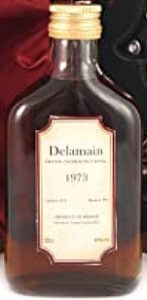




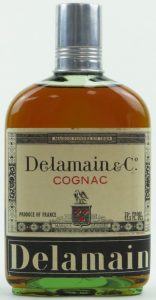

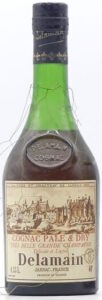





















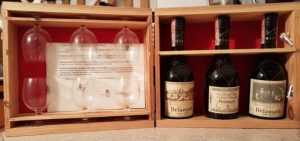
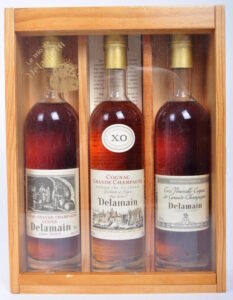
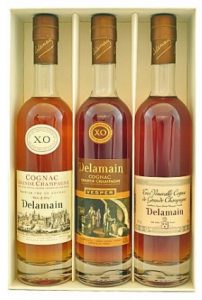
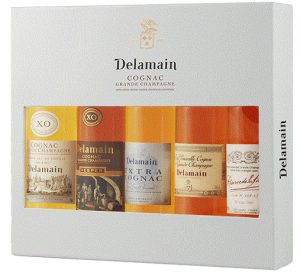
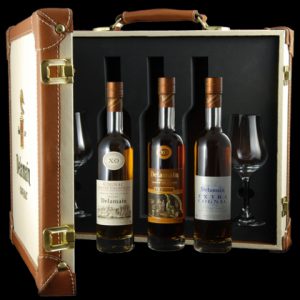
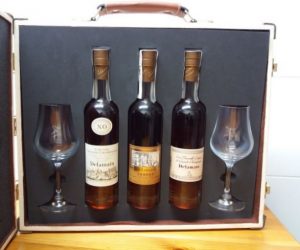
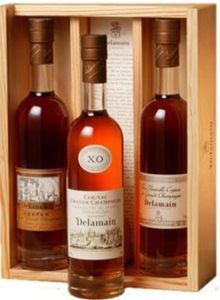
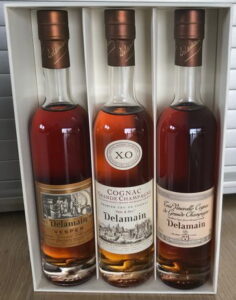
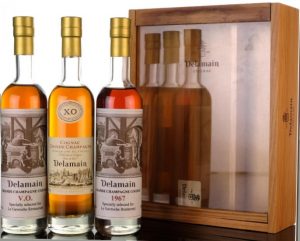
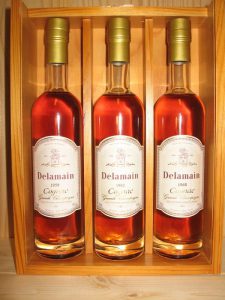

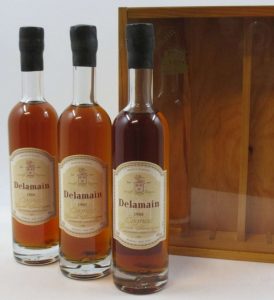
underside
That is to little to go by, sorry.
image attached
Greetings.
I have a bottle of Delamain & Co. Cognac which is missing it’s label. Is there any way of knowing what it is from the bottle?
It has a letter “A” on the underside.
It was bought my my father in law in the 1980’s .
Kindest regards
John
Morning team! Any thought’s on the bottling time period of this bottle?
700mL on left, 40% on right. To me it looks like the wide Delamain (starts under “o” and ends under “r”. Has filigree.
Thank you!
Probably around 1970s. But do you have any idea for which market (country) this bottle was made?
Thanks very much. I love your site and appreciate all the information and effort!
I am in Australia, but I am not sure where it was originally purchased. I will look for some more clues. If it was Australia would that change things?
Probably wouldn’t change anything. But I try to keep track of these things. Maybe if I gather enough information, a pattern emerges. For instance, in that period of time they used to place the content on the left side for that market. But it actually looks like it can differ almost for every batch they made.
I see, I will let you know if I see any other clues. A question for you in terms of taste, are there any major differences between older produced cognac and more modern? For instance, in Scotland the methods of heating have changed over time, leading to changes in flavour profile. Is there something like this in cognac? Perhaps vintages or grapes or something? It seems to me that there have not been many process changes, but I feel you may know of something.
The main process hasn’t changed much, that is correct. But there stille have been lots of small changes. And one big change, but that happened long ago: after the Phylloxera crisis, they started using a different grape variety. Whereas previously it was mainly Folle blanche, today more than 95% use Ugni blanc. Another important fact is that three-star cognacs and vsop cognacs from before say 1960 have usually aged much longer than those from after that time. I would certainly never drink a three-star (VS) cognac (I use it in cocktails or for cooking) and a VSOP is too young for me, too. But if it’s pre-1960, I’m sure it will be much better.
Next, there are have been many changes that improve quality. Different yeast strains, machine-picking instead of hand-picking, the way the cognac is filtered, the way the barrels are toasted, gas-fired boilers instead of wood-fired, which allows for much better temperature control and less incineration of the lees. Changes in the way the plants are pruned and other changes in vineyard maintenance. All these changes do have some impact on quality and taste. But for a layman, it is incredibly difficult to be able to know exactly which change leads to which flavour change.
I am here to leave something on your website as I always admire your efforts yet no other analogous work on Earth I suppose. My cabinet showcase is completed and basically I stop purchasing Cognacs due to multiple factors.
This is my Delamain collection and it takes up 3 compartments out of 14. I like this brand and time-point was stamped in May 2020.
Hi Murphy,
The other photo had a much better size, this one is rather small.
Delamain has always been one of my favorites, but nowadays I want to try new brands that I did not had before.
And to answer your question, I am retired now and the website indeed takes up a lot of time 🙂
Kind regards,
Ton
Hello!
This bottle is featured on this page and i bought it about a month ago. I am very curious about when this whas bottled. I haven’t seen this type of bottle for the tres vieux anywhere, only the gold label one from the 70’s and 80’s. It looks like it’s from the 50’s but i’m not shure. Anyway it’s gonna be a delight to drink when i turn 50 in five years.
Love your page and all the work you put in it.
Best wishes from Sweden.
Hello Morgan,
Thank you for the compliments.
I have only seen this bottle once and probably the precise one you have bought. I am not 100% sure when they were produced, but based on bottles with similar labels and the information from several auction sites during the years I think these are late 1960s to 1970s.
So maybe not from the 1950’s, but produced some 50 years ago. Maybe that will do too when you turn 50. 🙂
Kind regards,
Ton
Hallo Cognac Ton. Ik heb een fles Cognac : Delamain&Co Rouliet & Delamain R.D. Fine Cognac .
Kunt U mij misschien vertellen hoe oud de fles Cognac is ?
En wat hij eventueel waard is ?
Ik heb bij de afbeeldingen mijn fles niet gevonden. ( of ik heb niet goed gekeken )
Ik krijg de foto niet geupload, is er een andere manier ?
Met Dank , Groetjes Ronald.
Ik stuur wel een mailtje. Het gaat misschien makkelijker om foto´s per mail te sturen.
Ton